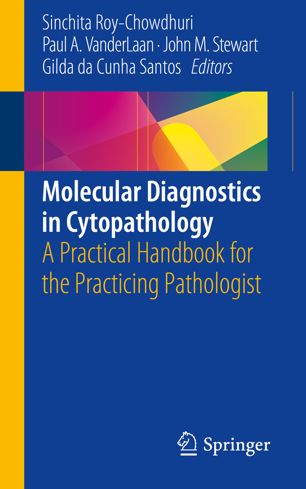

Most ebook files are in PDF format, so you can easily read them using various software such as Foxit Reader or directly on the Google Chrome browser.
Some ebook files are released by publishers in other formats such as .awz, .mobi, .epub, .fb2, etc. You may need to install specific software to read these formats on mobile/PC, such as Calibre.
Please read the tutorial at this link: https://ebookbell.com/faq
We offer FREE conversion to the popular formats you request; however, this may take some time. Therefore, right after payment, please email us, and we will try to provide the service as quickly as possible.
For some exceptional file formats or broken links (if any), please refrain from opening any disputes. Instead, email us first, and we will try to assist within a maximum of 6 hours.
EbookBell Team

4.4
92 reviewsMolecular diagnostics are increasingly used to help guide targeted therapy in solid organ tumors and hematologic malignancies. A large proportion of molecular testing is performed on limited-volume samples obtained via minimally invasive techniques, such as fine needle aspiration. Increasingly, cytopathologists play an essential role in this process, both in the triage of specimens during rapid on-site evaluation and in the evaluation of archival samples to determine suitability for ancillary testing. Therefore, it is imperative that practicing cytopathologists stay abreast of up-to-date diagnostic, prognostic, and predictive ancillary tests that can be used on limited cytologic material. This is a challenge since the landscape of known genomic alterations is constantly evolving and the subsequent set of testing options is ever expanding.
The proposed text will provide a user-friendly quick-reference handbook to serve as a useful resource for practicing pathologists and laboratory personnel dealing with, and interested in, this evolving field of molecular cytopathology. Essential components to be presented include: 1) pre-analytic factors that affect sample selection and evaluation; 2) specimen preparation to maximize confidence in results; 3) interpretation of results; 4) potential limitations; and 5) workflow algorithms. In addition, specific disease specific molecular testing details will be outlined to provide the reader with resources for quick reference. All chapters will be written by experts in their fields and will include the most up-to-date scientific and clinical information.
Molecular Diagnostics in Cytopathology will be of value to Cytopathologists, Cytotechnologists, Cytotechnology students, Cytopathology fellows, Surgical pathologists, Pathology residents and fellows, Molecular Pathologists, Molecular pathology fellows, Molecular technologists, as well as Translational researchers with an interest in molecular cytopathology.